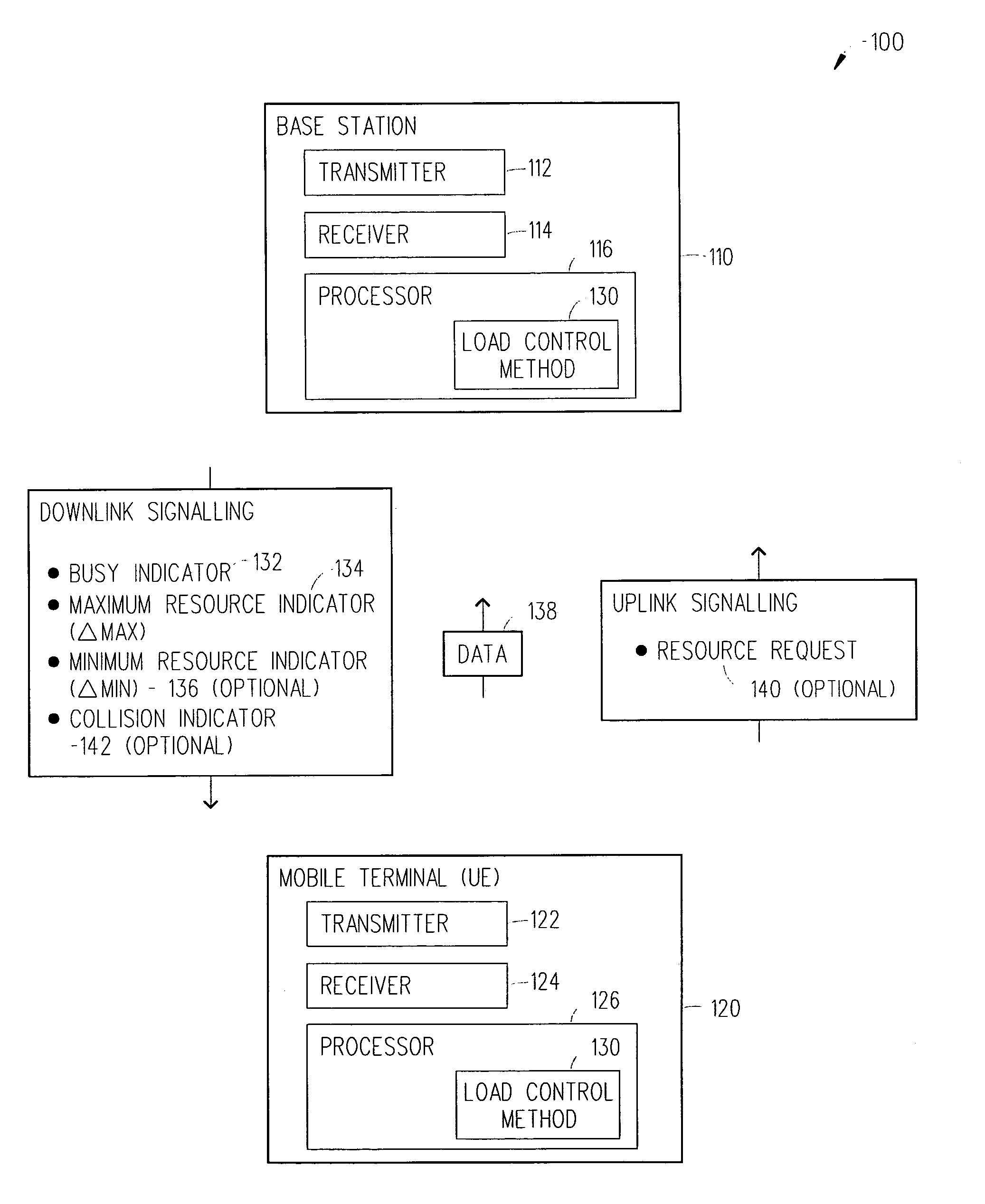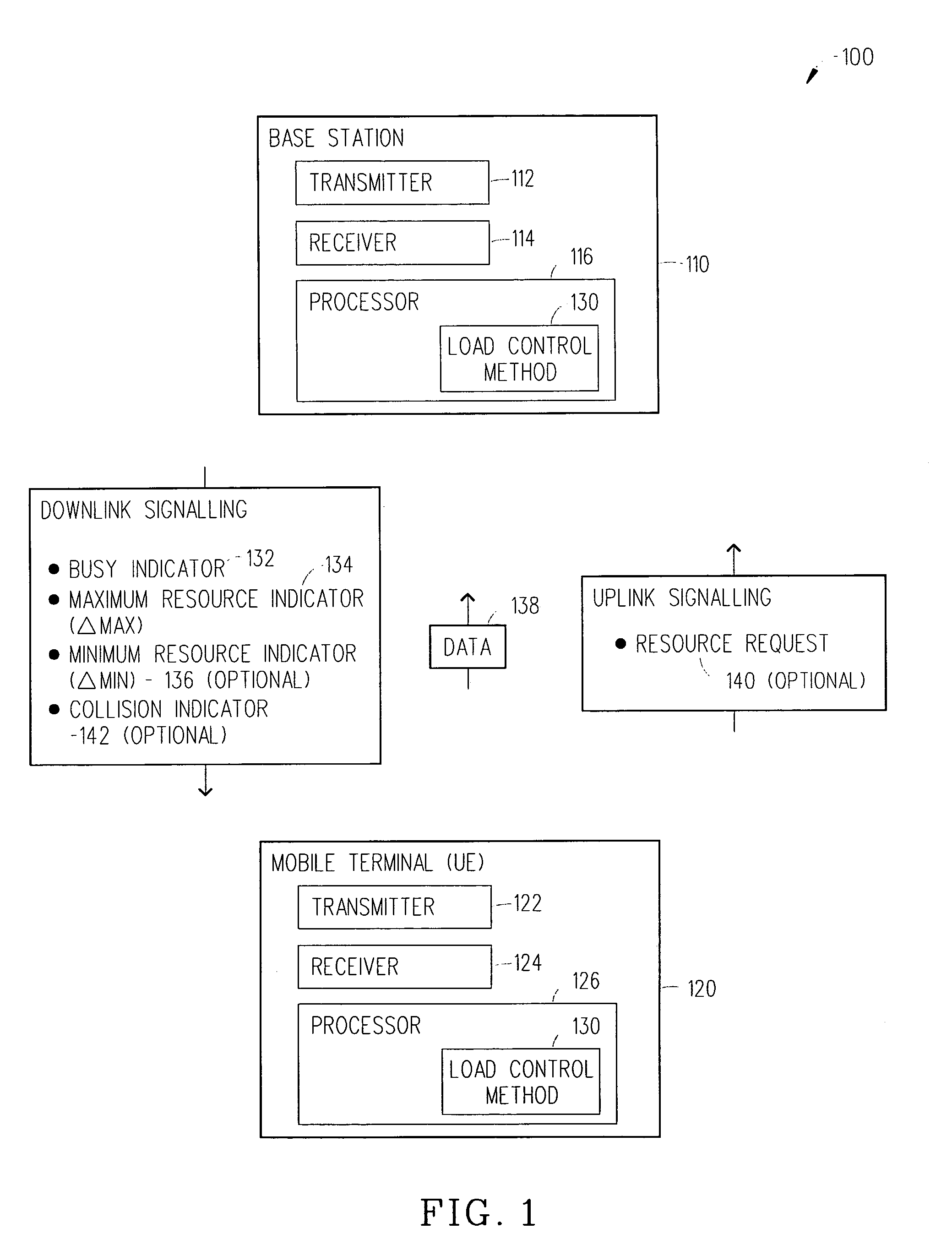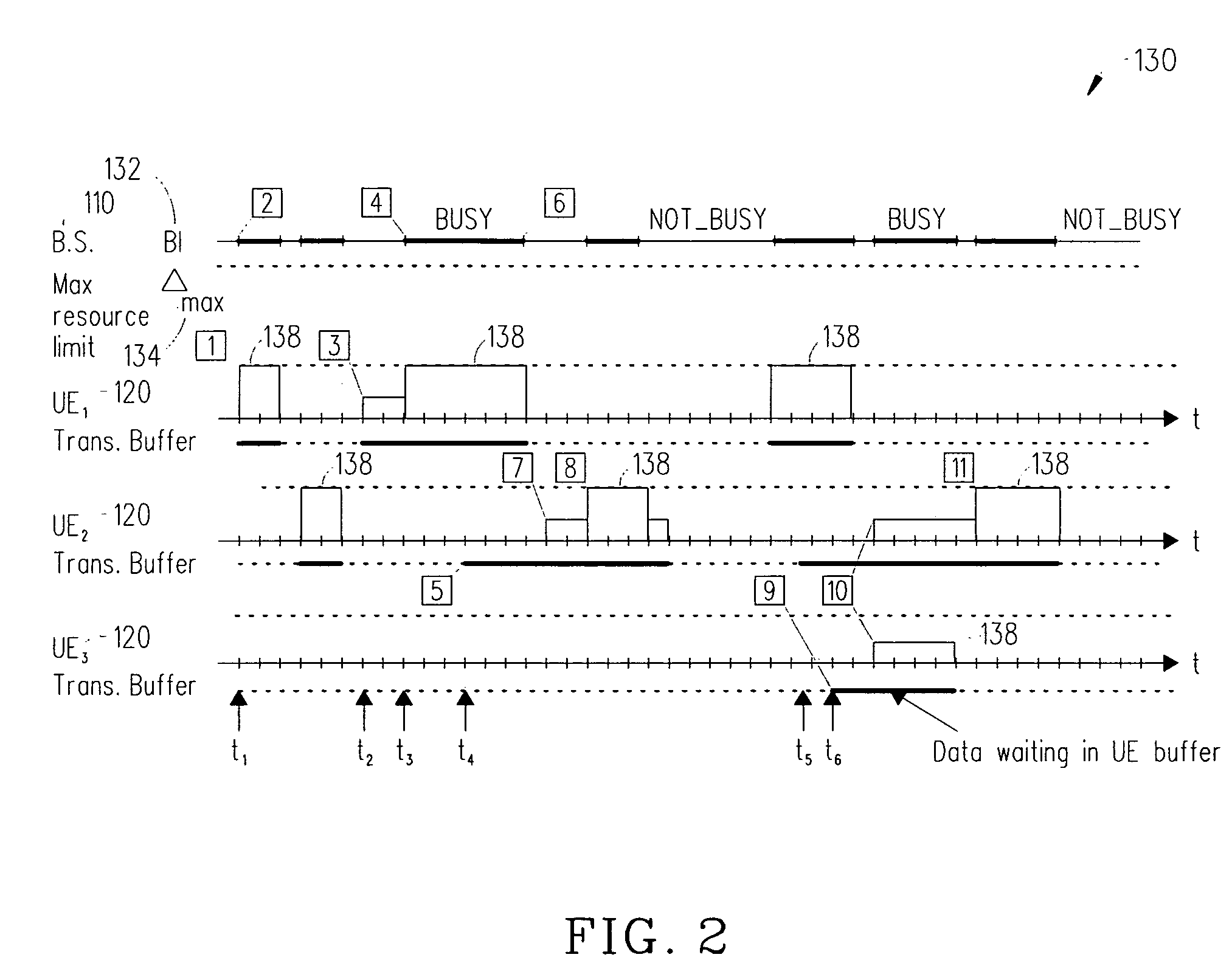Load control in shared medium many-to-one communication systems
a communication system and shared medium technology, applied in data switching networks, power management, wireless communication, etc., can solve the problems of reducing coverage and high interference of wcdma uplinks
- Summary
- Abstract
- Description
- Claims
- Application Information
AI Technical Summary
Benefits of technology
Problems solved by technology
Method used
Image
Examples
Embodiment Construction
[0051]0 if the minimum resource limit is sufficient.[0052]1 if the minimum resource limit is not sufficient.[0053]Example II[0054]0 if the current resource limit is sufficient.[0055]1 if the current resource limit is not sufficient.[0056]Example III[0057]0 if there is data to transmit.[0058]1 if there is no data to transmit.[0059]Example IV[0060]Three levels[0061]DTX—if there is no data to transmit.[0062]0—if there is data to transmit & the mobile terminal 120 is not capable of using more resources (limited by the available transmit power).[0063]1—if there is data to transmit & the mobile terminal 120 is capable of using more resources (is not limited by the available transmit power).
[0064]If more bits are available then these different alternatives can also be combined. As described above, the base station 110 can use the resource request 140 to set the limit in the maximum resource indicator 132 to an appropriate value depending on the current load it may also be used to schedule ...
PUM
 Login to View More
Login to View More Abstract
Description
Claims
Application Information
 Login to View More
Login to View More - R&D
- Intellectual Property
- Life Sciences
- Materials
- Tech Scout
- Unparalleled Data Quality
- Higher Quality Content
- 60% Fewer Hallucinations
Browse by: Latest US Patents, China's latest patents, Technical Efficacy Thesaurus, Application Domain, Technology Topic, Popular Technical Reports.
© 2025 PatSnap. All rights reserved.Legal|Privacy policy|Modern Slavery Act Transparency Statement|Sitemap|About US| Contact US: help@patsnap.com



